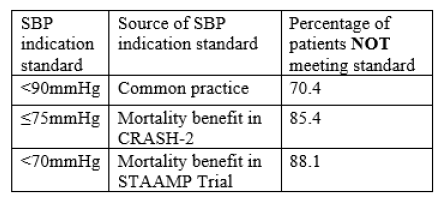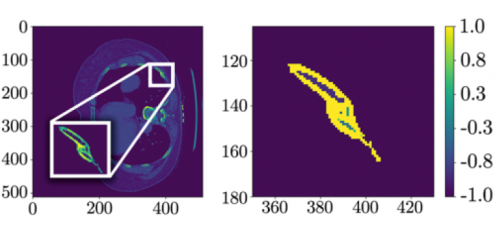Time for another abstract on venous thromboembolic disease (VTE) prophylaxis, but this time in patients with severe head injury. VTE is a significant problem for trauma patients. Those with a potential source of bleeding from their injuries cause us to hesitate and consider the timing of chemical prophylaxis closely. Do we really want to cause more bleeding?
This is particularly problematic with intracranial hemorrhage, as the treatment is major brain surgery. Over recent years, the literature has been leaning toward earlier prophylaxis as soon as the intracranial blood has stopped evolving.
The EAST Multicenter Trials Group performed a seven-year retrospective review at 24 Level I and II trauma centers to assess the safety and efficacy of VTE chemoprophylaxis. They divided patients into three groups: no prophylaxis, early prophylaxis (within 24 hours), and late prophylaxis (after 24 hours).
The authors assessed two endpoints: VTE occurrence and expansion of intracranial hemorrhage (ICH). They used several regression models to check their hypotheses.
Here are the factoids:
- A total of 2,659 patients met the inclusion criteria. This averages out to 15 eligible patients per month per center. This is probably reasonable when combining a few high-volume centers with more lower volume centers.
- Compared to early prophylaxis, patients who received late prophylaxis were twice as likely to develop VTE, although this was not statistically significant (p = 0.059)
- Compared to early prophylaxis, patients who received no prophylaxis were a third less likely to develop VTE, although this, too, was not statistically significant (p = 0.39
- About 25% of patients who received either early or late prophylaxis suffered an extension of their ICH, but only 17% of the no-prophylaxis group did
- The regression model showed that the no prophylaxis group was 36% less likely to develop ICH extension compared to either early or late prophylaxis groups.
The workgroup concluded that the development of VTE was not dependent on the timing of the start of prophylaxis. Furthermore, patients who did not receive any prophylaxis had significantly decreased odds of ICH extension. The group recommended larger randomized studies to extend this work.
Bottom line: Shocker! This multicenter study suggests that the no prophylaxis and early prophylaxis groups had fewer VTE events than the late group, although these results were not statistically significant. This means that there wasn’t an advantage to giving the shot.
And the other major conclusion was that both early and late prophylaxis was associated with a significantly higher incidence of ICH extension.
Roll these together, and you will find that neither early nor late prophylaxis help prevent VTE, yet they are both associated with additional bleeding in and around the brain!
Heresy! I am trying to figure out what to make of these results. Perhaps the retrospective nature of the study and the wildcards this introduces influenced the results. It could be a study power problem, except the numbers were approaching significance that was unfavorable for prophylaxis.
I will be very interested to hear how the authors explain these findings. And yes, a well-powered randomized study would be great, but I don’t think many institutional review boards will be keen on a no-treatment group given our current fear of VTE. So don’t count on any real answers soon.
Reference: EARLY VTE PROPHYLAXIS IN SEVERE TRAUMATIC BRAIN INJURY: A PROPENSITY SCORE WEIGHTED EAST MULTICENTER TRIAL. EAST 2023 Podium paper #38.


